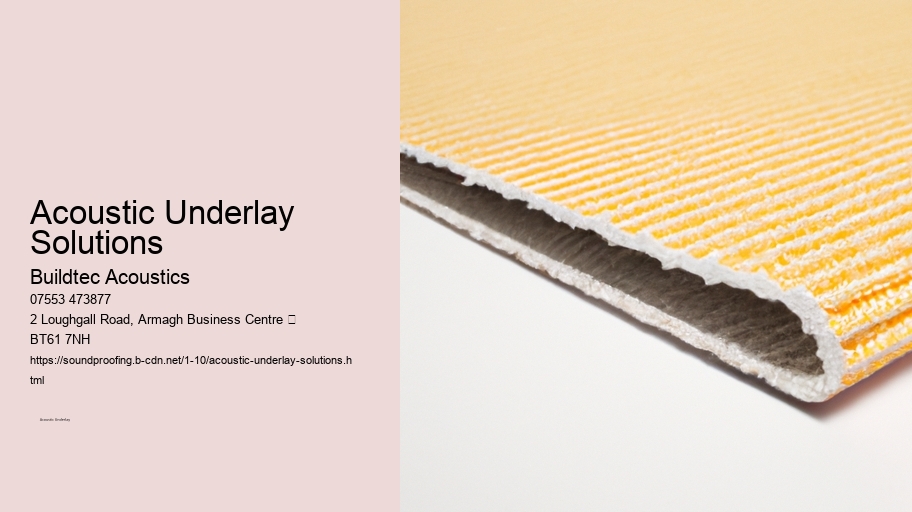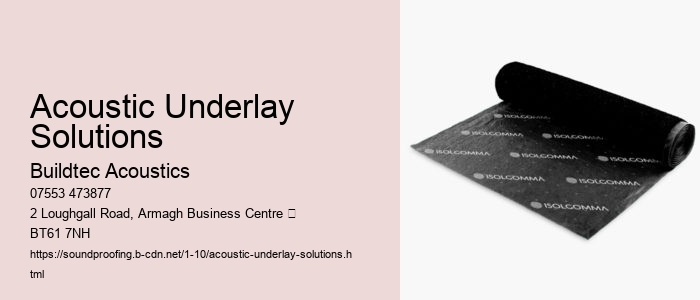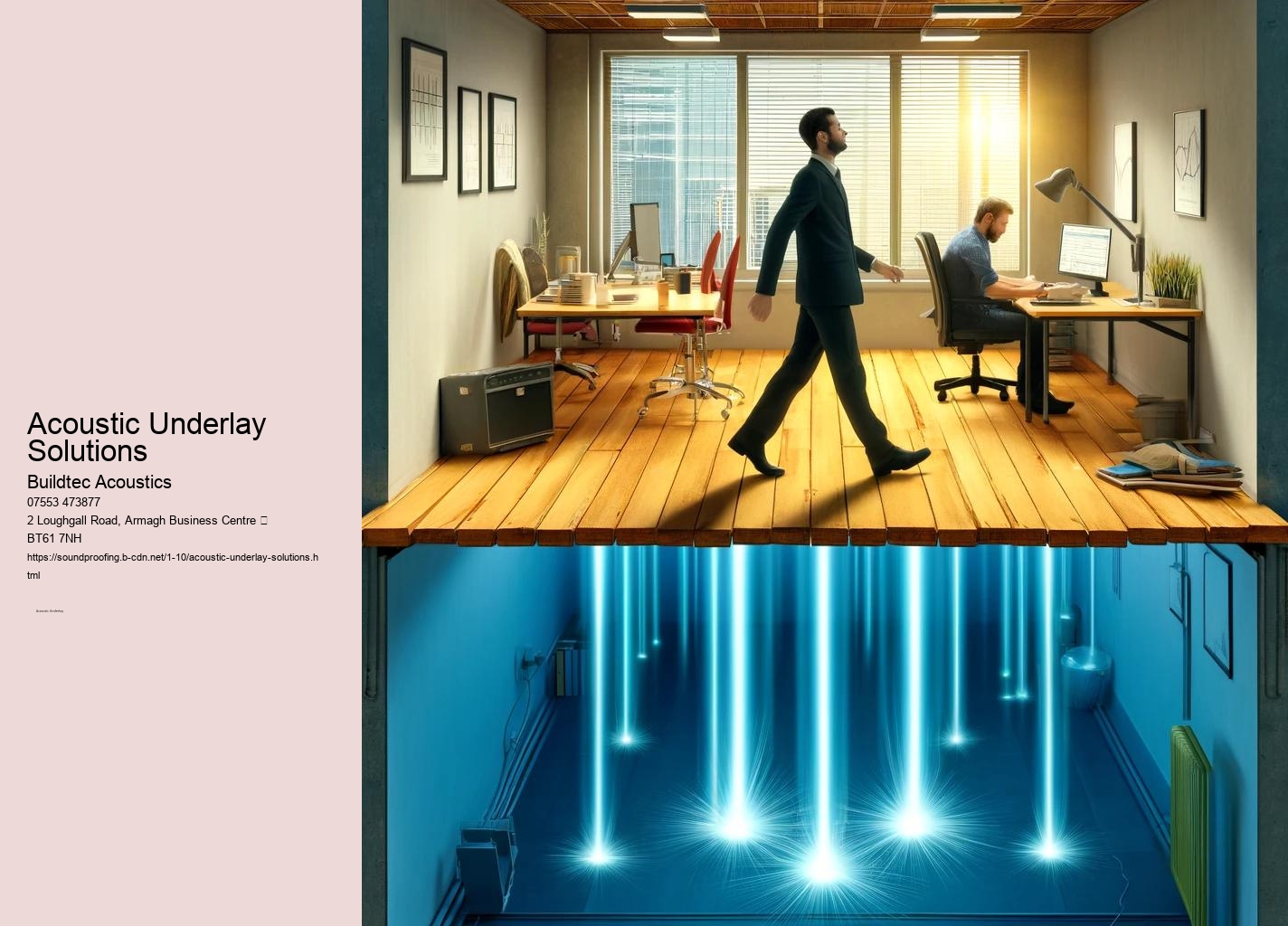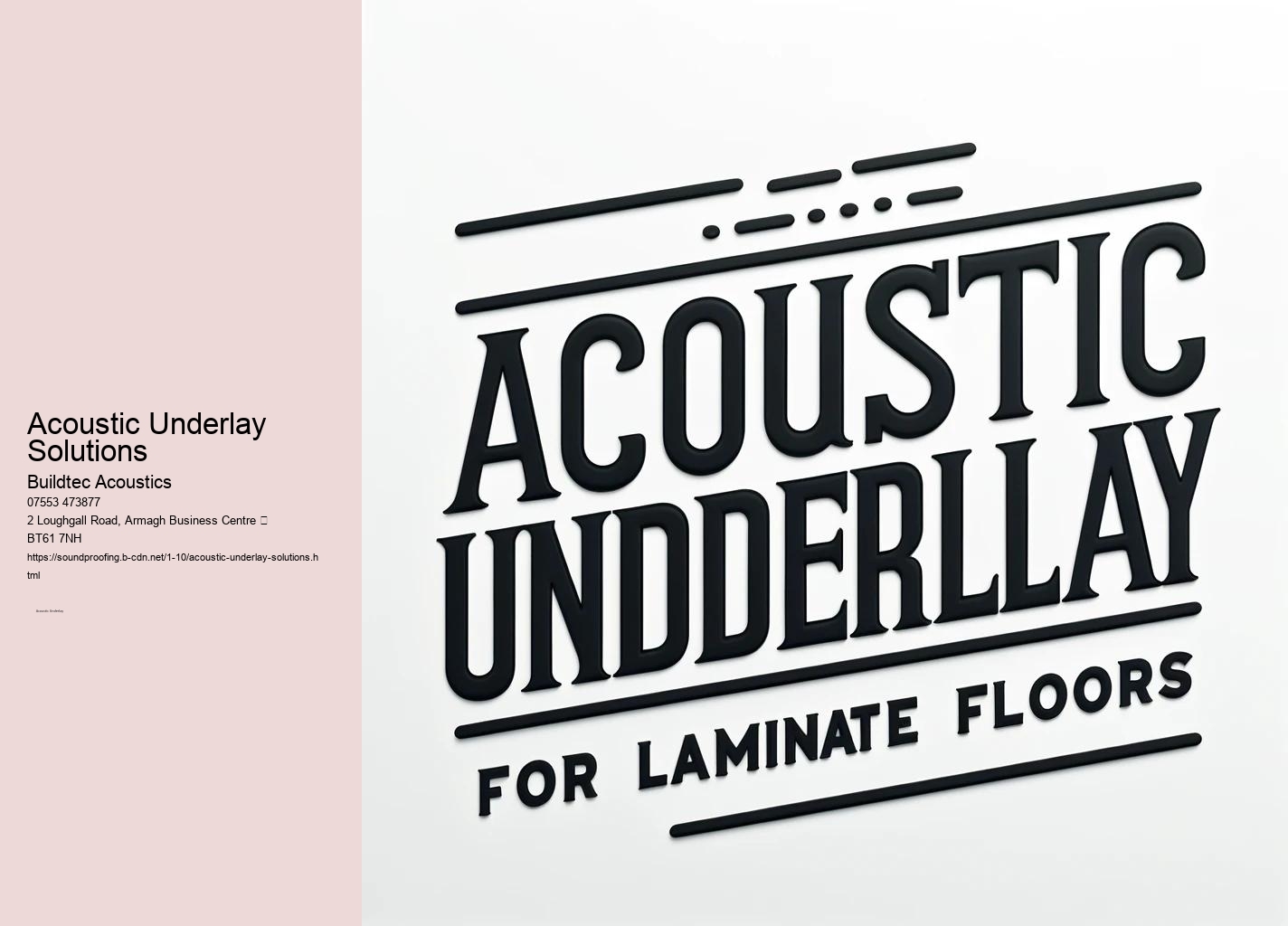

Acoustic underlay is an essential material for effective noise control in both residential and commercial spaces. By reducing both airborne and impact noise, these underlays contribute to creating a peaceful environment, whether at home, in the office, or in a commercial setting. In rooms with underfloor heating, selecting an underlay with low thermal resistance allows heat to transfer efficiently without being blocked by the soundproofing material. Looking to dampen noise in your office then use acoustic underlay under your floor.
Whether in a single-family detached home or a semi-detached house, the installation of acoustic underlay ensures that daily activities do not negatively affect others. They are particularly effective when used with materials like ceramic tiles or floating floors, providing both sound insulation and comfort underfoot.
Acoustic underlays do not compromise the aesthetics and design of the finished floor. The choice of acoustic underlay also depends on the type of noise that needs to be controlled.
The choice of acoustic underlay depends on the type of noise that needs to be managed. Acoustic underlays are versatile and can be used in a variety of settings, from residential homes to commercial spaces like offices or retail environments.
They are installed beneath the visible flooring material, meaning that the desired flooring-whether elegant hardwood, practical laminate, or cozy carpet-remains unchanged. Including acoustic underlays in renovation projects also helps ensure compliance with building insulation standards and soundproofing regulations, providing peace of mind to homeowners and builders. The primary function of acoustic underlays is to address both impact noise and airborne sound.
By utilizing high-density materials such as crumb rubber and cork, acoustic underlays provide efficient noise control, reducing the impact of sound on occupants in adjacent rooms or units. Before installing an acoustic underlay, it is essential to ensure that the subfloor-whether concrete, particle board, or cement-is clean, level, and dry.
The use of recycled fibers and materials helps promote recycling, while minimizing the environmental footprint of soundproofing installations. Underlays help to isolate vibrations, preventing them from being transmitted through the building structure and reducing their impact on adjacent rooms or units.
Underlays help isolate vibrations, preventing them from being transmitted through the structure of the building, and reducing the impact on adjacent rooms or units. Some underlays are certified by Leadership in Energy and Environmental Design (LEED) standards, supporting sustainable building practices.
Exploring the sustainable aspects of acoustic underlays.

Posted by Francis Mckenna on
How acoustic underlays improve room acoustics and reduce unwanted noise.

Posted by Francis Mckenna on
How acoustic underlays can help isolate vibrations in buildings.

Posted by Francis Mckenna on
They are particularly effective when used with materials like ceramic tiles or floating floors, enhancing both sound insulation and comfort underfoot. Buildtec Acoustics offers underlays made from environmentally friendly materials, such as cork, recycled crumb rubber, and natural wool. This process involves the transformation of sound energy into heat, which then dissipates harmlessly.
The use of acoustic underlay under wood flooring or laminate flooring can significantly reduce noise levels in rooms. The use of recycled fibers and materials encourages recycling while minimizing the environmental footprint of soundproofing installations.
The primary function of acoustic underlays is to address both impact noise and airborne sound. Acoustic underlays are also valuable for renovation projects.
In commercial environments, the reduction of noise pollution creates a more productive and pleasant working space, enhancing overall efficiency. The materials used in acoustic underlays, such as foam, cork, and natural rubber, are highly effective at reducing vibrations and controlling noise.


By reducing both airborne and impact noise, these underlays contribute to creating a peaceful environment, whether in the home, office, or commercial settings. mass Before installing an acoustic underlay, it is important to ensure that the subfloor-whether concrete, particle board, or cement-is clean, level, and dry. These materials also provide thermal insulation, enhancing the thermal resistance of the room while effectively managing noise levels.
In homes, whether it is a single-family detached home or a semi-detached house, the installation of acoustic underlay ensures that everyday activities do not have a negative affect on other occupants. In conclusion, acoustic underlays from Buildtec Acoustics provide an effective solution for soundproofing floors, enhancing room acoustics, and improving overall comfort.
The choice of acoustic underlay depends on the type of noise that needs to be managed. Before installing an acoustic underlay, it is essential to ensure that the subfloor-whether concrete, particle board, or cement-is clean, level, and dry.
Acoustic underlays help to absorb these sounds, resulting in improved room acoustics. Before installing an acoustic underlay, it is important to ensure that the subfloor-whether concrete, particle board, or cement-is clean, level, and dry.
Acoustic underlays are versatile and suitable for use in many settings, from residential homes to commercial spaces such as offices or retail environments. When considering soundproofing methods, acoustic underlays are a reliable solution for reducing noise pollution, improving room acoustics, and creating a more comfortable environment. Floating floor systems also benefit from acoustic underlays, which provide an extra layer of soundproofing beneath the flooring material.
In rooms with underfloor heating, selecting an underlay with low thermal resistance ensures that heat transfers efficiently without being obstructed by the soundproofing material. They are installed beneath the visible flooring material, meaning that the desired flooring-whether it is elegant hardwood, practical laminate, or cozy carpet-remains unaltered.
When considering soundproofing solutions, acoustic underlays provide an effective means to reduce noise pollution, improve room acoustics, and create a comfortable environment. Hard surfaces, such as hardwood and laminate, often amplify sounds like footsteps, leading to unwanted echo and reverberation.
Environmental considerations are central to the design of acoustic underlays. Whether the flooring type is laminate, ceramic, or hardwood, Buildtec Acoustics provides underlays specifically designed to work with the chosen material.


Floating floor systems also benefit from acoustic underlays, which provide an additional layer of soundproofing beneath the flooring material. Buildtec Acoustics offers a variety of acoustic underlays designed to address both airborne and impact noise, providing a versatile solution for diverse flooring applications, including wood flooring, ceramic tiles, and laminate flooring. In commercial settings, reducing noise pollution creates a more productive and pleasant work environment, boosting overall efficiency.
By using high-density materials like crumb rubber and cork, acoustic underlays effectively control noise, reducing its impact on people in adjacent rooms or units. They are installed beneath the visible flooring material, ensuring that the desired flooring-whether it is elegant hardwood, practical laminate, or cozy carpet-remains unaltered.
Acoustic underlays do not compromise the aesthetics or design of the finished floor. This helps improve communication between occupants by reducing noise interference.
This helps improve communication between occupants by reducing noise interference. The primary role of acoustic underlay is to manage both impact noise and airborne sound.
Installing acoustic underlay beneath wood or laminate flooring can significantly reduce noise levels in rooms. Acoustic underlays function by absorbing and dissipating sound energy, which helps to minimize noise transmission through floors. During renovations, installing acoustic underlays can significantly improve the acoustic properties of existing floors, whether in residential or commercial settings.
Acoustic underlay is an essential component in managing noise control in residential and commercial spaces. They are particularly effective when used with materials like ceramic tiles or floating floors, providing both sound insulation and comfort underfoot. foot
Acoustic underlay is a critical solution for effective noise control in residential and commercial environments. Acoustic underlays made from polyvinyl chloride (PVC) or cork are ideal choices, as they balance both thermal insulation and soundproofing requirements.
Acoustic underlays are versatile and suitable for use in various settings, from residential homes to commercial spaces like offices or retail environments. Airborne noise, such as music or conversations, can be reduced by selecting underlays with higher sound transmission class ratings.

Acoustic underlays are compatible with a wide range of flooring types, including wood, laminate, carpet, and ceramic tiles. The versatility of these underlays makes them suitable for different residential and commercial applications.
Acoustic underlays are an excellent choice for renovation projects as they can easily be installed under new flooring to improve noise insulation. They help bring older buildings up to modern soundproofing standards, making them more comfortable for occupants.
Yes, acoustic underlays are effective in reducing foot traffic noise by absorbing the impact of footsteps. This is especially important in areas with high foot traffic, such as offices or apartments, where noise reduction can greatly improve comfort.